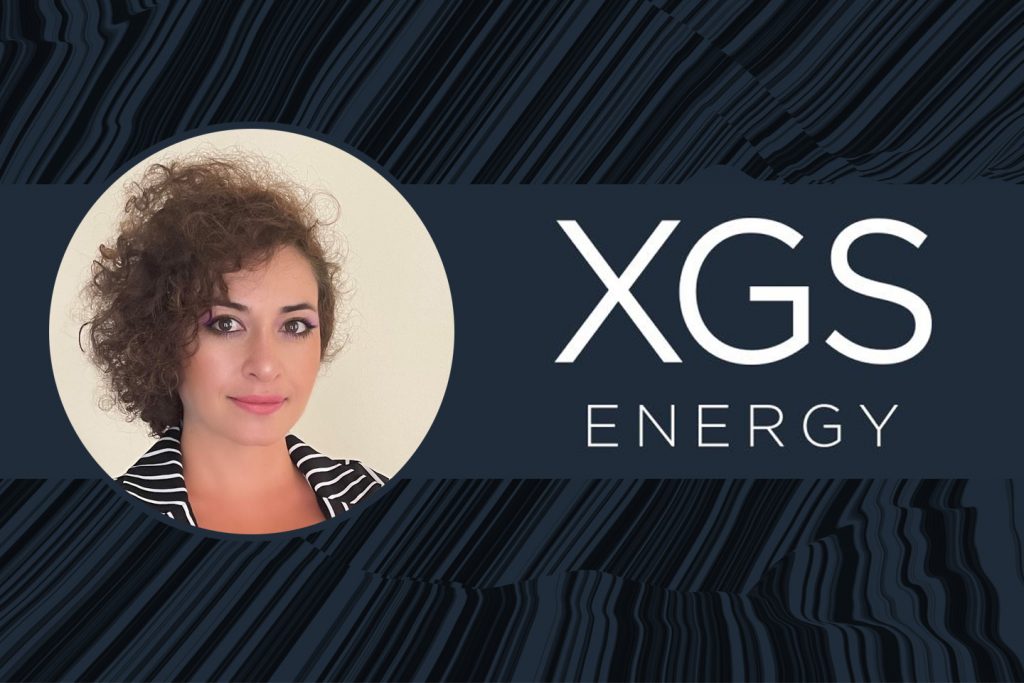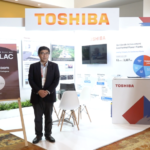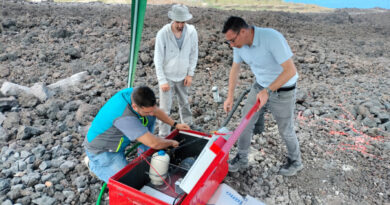Interview – Making geothermal energy scalable with XGS Energy
Energy Disrupter
In this interview, XGS Energy COO Ghazal Izadi discusses the company’s heat harvesting technology and how it addresses the challenges of geothermal scalability.
Earlier this year, we reported on XGS Energy securing USD 19 million in financing to help develop its proprietary heat harvesting technology that will increase the scalability of geothermal energy. This news comes along with a rebranding of the company from Geothermic Solution INC and the announcement of a new set of board of directors.
To further explore the revolutionary technology proposed by XGS Energy and how it can help the wider geothermal industry, we conducted an interview with XGS Energy COO Ghazal Izadi. Ghazal, a recognized global expert in subsurface characterization, well construction, and stimulation, discusses the approach of XGS Energy in making geothermal scalable and deployable anywhere.
Congratulations on the recent series of milestones that XGS Energy has achieved, seemingly in quick succession. With the announcement of new funding and your proprietary technology, how will you describe the identity of the rebranded XGS Energy?
Thank you, we are very excited to come out with this new brand. The brand represents a few different concepts:
First, is that we operate in extreme conditions in terms of temperature, which means that we are targeting higher temperatures compared to other geothermal systems. Second, is that we operate without extraction of geothermal brine and with no reinjection of water. This means that there is also no risks of toxic chemical or greenhouse gas emissions, which helps reduce the environmental impact of a geothermal project.
The third is that our system is a hybrid, crossover solution between Enhanced Geothermal Systems (EGS) and Advanced or Closed-Loop Geothermal Systems (AGS / CLG). These three concepts give us a very strong identity in terms of our brand.
The proprietary heat harvesting technology is central to the business of XGS Energy. Can you briefly describe how the technology works?
Our approach works a bit differently from current geothermal projects. The important factor is that we extract heat, not hot water, which enables us to access geothermal potential anywhere there is hot rock. I would like to explain the overall approach in five steps:
- Step one is drilling. We start with a single directional well to access the hot rock at temperatures higher than 250 degrees Celsius.
- Step two is enhancing the subsurface by installing a network of highly thermally conductive material that helps to transfer heat efficiently. This extends the surface area of the wellbore in terms of the volume of hot rock that it can access without extending the well itself.
- Step three is connection. Using thermally conductive cement, we connect our thermally conductive material and network with the rock. This also supports the integrity of the wellbore. Steps 2 and 3 (enhancing and connecting) are what really differentiate us from other solutions. The thermal enhancement approach gives access to the potential of any hot rock anywhere.
- Step four is closing the loop. To complete the well, we install insulated tubing that returns the hot water to the surface in a closed-loop configuration. The same water can be used over and over rather than extracting in a single-use manner.
- Step five is harvesting. By harvesting the heat at the surface, it can be used for power generation or direct use, leveraging mature, off-the-shelf infrastructure
We aim to leverage existing proven technologies that have been deployed both in oil and gas and geothermal as much as possible, but need to be flexible in adopting those technologies depending on the environment where we want them to be deployed and installed. This means doing design and engineering that is appropriate to the geothermal system that we seek to develop.
Your branding is very focused on the scalability of geothermal. How does this technology address the hurdles of scaling up the geothermal industry?
I would like to highlight that there are several important reasons geothermal has not yet reached a scale comparable to wind and solar. If we can address these challenges using breakthrough technologies, geothermal can scale up much faster.
One reason is the dependency on an underground hot water reservoir, which has historically limited where geothermal energy can be accessed. Another challenge is the dependency on enormous volumes of water, potentially up to millions of gallons per day when geothermal systems require constant injection.
A third reason is the thermal decline of geothermal assets over time, which can limit asset lifetime. Together, these result in high operating and maintenance costs. It is also very important that we consider the risks of emission of undesirable gases and induced seismicity created through constant injection and extraction of geothermal brine.
As I mentioned, our approach works a bit differently to address these challenges. It’s very important for us to really think about not extracting hot water, and just harvesting the heat. Since all XGS needs is hot rock, we can significantly reduce exploration risk. And since our system is closed-loop, we can also eliminate water dependency and mitigate production issues related to scaling, corrosion, and thermal decline. We want to provide an economical solution that is scalable and deployable anywhere.
The technology sounds very pioneering, but also quite challenging. What is the current state of development of this technology? Can you provide an estimated timeline for testing to deployment?
Yes, we are running very large-scale testing in the lab at the moment and exploring locations for our prototype and pilot projects to take place in the next year or so.
We are also exploring how we can further accelerate our technology development with the help of our partners. Several conversations are happening at different geographic locations in order to accelerate technology development.
Do you anticipate that drilling and fracture propagation will be major challenges in developing this technology?
With the innovations and advancement of oil and gas technology, particularly from the shale revolution, and geothermal and material industries, we can address these challenges. Today, we have faster, higher temperature, and deeper drilling technology that allows us to access geothermal potential which has been previously inaccessible. We have proven stimulation technologies that bring a new approach to improving the permeability of subsurface formations.
The closed-loop architecture is not new but it’s getting more mature, potentially eliminating the massive amount of water needed by other geothermal systems. Again, material science plays a big role in the improvement of this closed-loop architecture.
At XGS, we aim to leverage all of these proven technologies that have been developed, while also bringing an innovative approach to solve the final pieces of the puzzle.
Where and how are you planning to deploy this new technology? Will you be partnering with existing developers or developing your own project?
Our deployment approach will vary depending on the project. We believe we can significantly accelerate our technology development progress by partnering with existing developers. But we are also evaluating opportunities on a project-by -project basis globally.
There are a lot of places around the globe, especially in the “Ring of Fire,” where we know we can access very high temperatures at shallower depths. However, lesser-developed areas that lack water or permeability are also very interesting to us, as they can demonstrate the ability of our technology to unlock previously inaccessible geothermal potential.
Your management team and board of directors have very diverse backgrounds. What has made the geothermal industry an attractive venture for the team and the company?
The time for geothermal is now. Both our team and our Board are united by our excitement for geothermal to contribute in a big way to provide reliable, affordable, and sustainable energy globally. We have been able to attract a diverse and capable team because leaders across sectors and industries are simply incredibly excited to develop and deploy carbon-free energy solutions at scale.
We are also excited about the synergies of geothermal with the oil and gas industry and the opportunity to leverage the oil and gas workforce, technology, and capability set. As you have seen in our Board and team, we are building from deep oil and gas experience, and this will be a continued focus for our hiring and partnerships going forward.

















